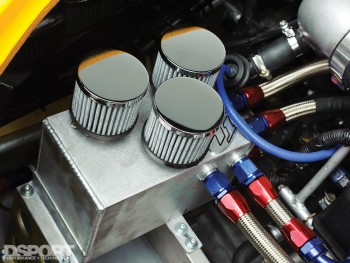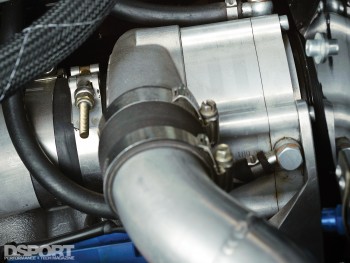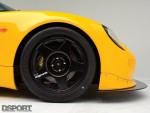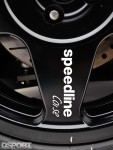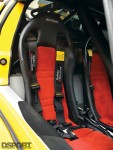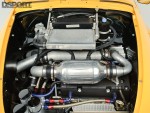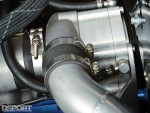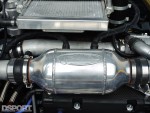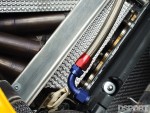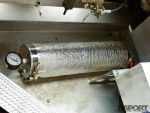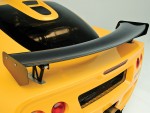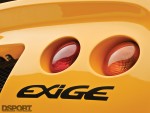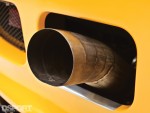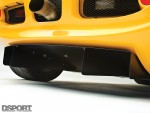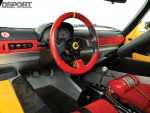Adhering to the company’s mantra of “Performance Through Light Weight” Lotus developed its S1-series Exige in 2000. Powered by a 177-horsepower Rover K-series engine, the 1,700-pound mid-engine sportscar delivered phenomenal performance.
When Chris Wilson came across the opportunity to pick up this 2000 Exige S1 rolling chassis minus the engine and transmission, he quickly closed the deal. The next step was to source an engine and transmission. Building up a Rover K-series engine was an option, but finding parts in the States is next to impossible. A more plausible solution would be installing a Toyota 2ZZ engine and transmission like the ones fitted in the current-generation Exige and Elise. This 1.8-liter engine would offer 190-horsepower while adding just 70 pounds to the package. However, Chris would find an even more powerful solution in the Honda K-series engine and transmission. This engine and transmission package could be a reality with an off-the-shelf conversion kit. Going this route, the base engine could pack as much as 2.4-liters of displacement.
Text by Brian English // Photos by Michael Ferrara

Good Exige Plan, Wrong Engine Builder
With what seemed like a solid plan, Chris contracted a Honda-performance specialist shop to build him a engine that would excel when teamed with a Rotrex centrifugal supercharger. Unfortunately, he picked the wrong company. The K20A2 “built” engine that was delivered had used bearings, 13:1 pistons that interfered with the head and an engine sensor installed backwards. As a result, the engine ran for a few minutes before failing. Tear down of the engine revealed a number of additional mistakes. Making the best of the situation, Chris found a capable engine builder to assemble an even larger displacement 2.4-liter K24A8 bottom end.
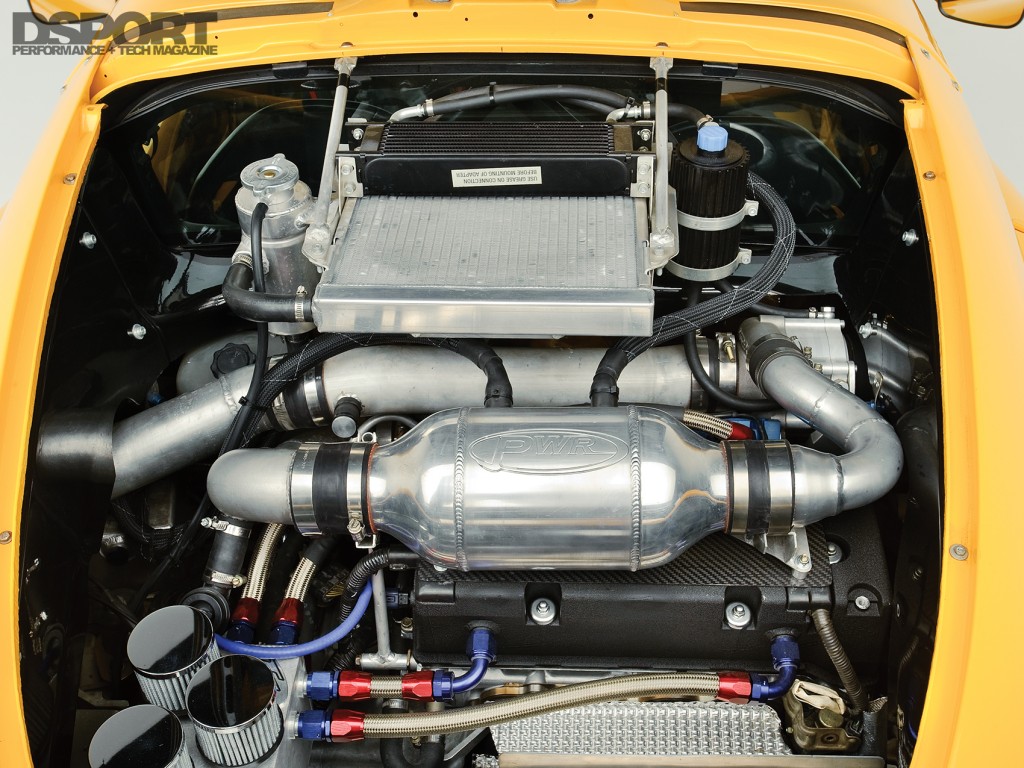
The Rotrex supercharger’s air-to-water intercooler and supporting heat exchangers conceal the Honda motor underneath. One exchanger is used to cool the intercooler water while the smaller black one cools the supercharger’s oiling system.
Time to See the MD
After the incident with the first engine builder, Mark Dibella of MD Automotive took the lead in getting the Honda-K-powered Exige back on track. This time, RS Machine of Norwalk, CA would properly prepare the Honda motor for a supercharger. To handle the higher cylinder pressures, forged 10:1 pistons from CP Piston were hung on Carrillo forged connecting rods. The rods connect to the blueprinted K24 crankshaft. ARP head bolts secure the built bottom end to the K20A2 cylinder head from a 2002-04 RSX Type-S. This i-VTEC head provides variable cam timing and airflow capabilities superior to other Honda K-series heads. These aspects are further improved upon by a set of BC Brian Crower Stage-2 camshafts, valve springs and retainers.
Power Under The Belt
After receiving the engine back from the machine shop, Mark designed and installed a kit centered around the Rotrex C30-94 supercharger capable of airflows to just over 400 horsepower. The centrifugal supercharger draws air through a K&N intake filter and pushes it through a PWR air-to- water intercooler to reject air-charge heat. Once the chilled air pressurizes the Honda intake manifold at 14 psi, RC Engineering 750 cc/min injectors spray 91-octane pump gas into the intake ports. After the air/fuel mixture rushes into the cylinder, NGK spark plugs ionize the gap to initiate the combustion process.
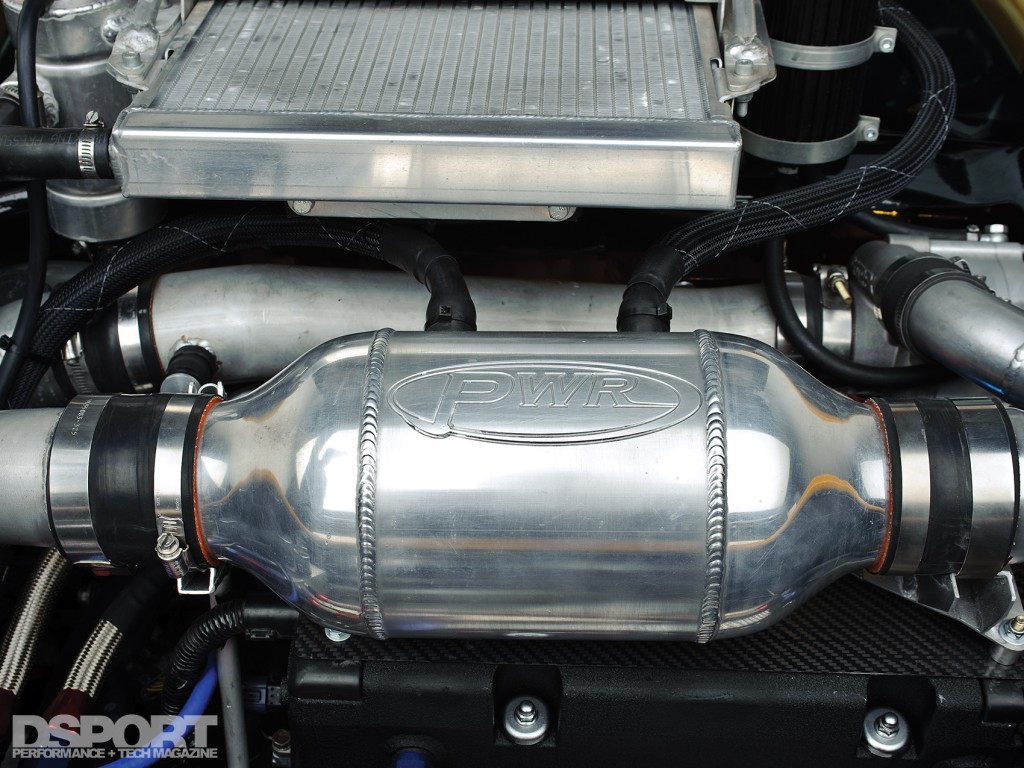
Pro Control for the K
A Hondata K-Pro engine management system wires to the vehicle through an Apex Speed Technology custom wiring harness. After tuning by Hondata co- owner Doug MacMillan, the supercharged K24/K20-hybrid engine delivered 412 peak horsepower and 290 lb-ft of torque to the wheels as measured on MD Automotive’s Dynojet 248 chassis dyno. At the flywheel, those power figures equate to 485-flywheel horsepower. That’s a 174-percent increase in power over the original Rover K motor.
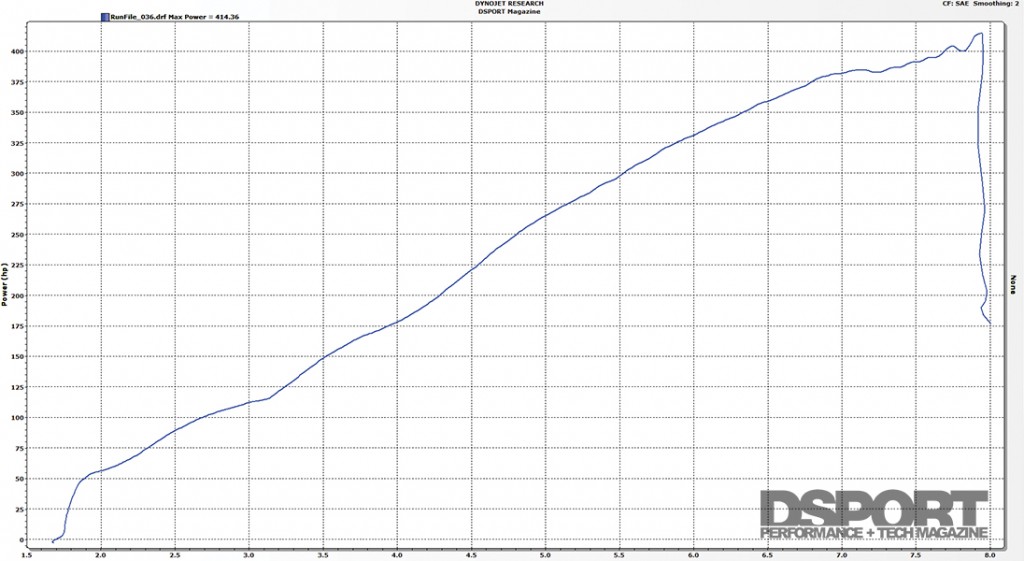
While its possible to find some well-built imports with 412 horsepower at the wheels, these cars typically weight 3,000 to 3,800 pounds. Having 412 horsepower in a 1,730-pound Exige equates to 850 wheel horsepower in a 3,570-pound car. That’s “Performance through light weight and serious power.” As for making even more power, the supercharger and injectors are currently maxed out. Hence, both would require upgrades to deliver the mass of air and fuel needed to make more power.

Light on its Toes
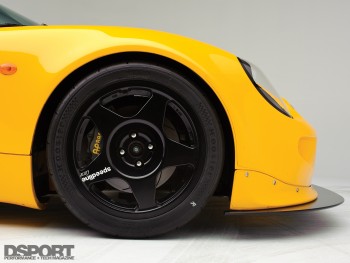 Ensuring reliable power delivery required some further enhancement of the drivetrain. An ACT Stage-2 clutch mates the factory flywheel to a 6-speed transmission from an RSX Type-S. A Mugen limited-slip differential splits power to custom Drive Shaft Shop axles linked to extremely-light Speedline Corse magnesium wheels. Wrapped with Hoosier R6 DOT road-slick tires, the lightweight wheels greatly reduce the rotational inertia and improve both acceleration and braking. When speed needs to be shaved, AP Racing 4-piston calipers squeeze Pagid brake pads into the front 2-piece rotors while AP Racing 2-piston calipers slow the rear.
Ensuring reliable power delivery required some further enhancement of the drivetrain. An ACT Stage-2 clutch mates the factory flywheel to a 6-speed transmission from an RSX Type-S. A Mugen limited-slip differential splits power to custom Drive Shaft Shop axles linked to extremely-light Speedline Corse magnesium wheels. Wrapped with Hoosier R6 DOT road-slick tires, the lightweight wheels greatly reduce the rotational inertia and improve both acceleration and braking. When speed needs to be shaved, AP Racing 4-piston calipers squeeze Pagid brake pads into the front 2-piece rotors while AP Racing 2-piston calipers slow the rear.
The interior of the car essentially remains the way Lotus designed it with sport buckets, roll bar and fire suppression system. Every component is designed for lightweight function over form. Even the dash hosts nothing but the bare essentials. No space or weight is wasted for amenities like temperature control ducts.
The exterior of this Exige received refinement with a new carbon-fiber roof scoop, side-intake sills and rear wing. These enhancements portray a more menacing appearance while improving aerodynamic function.
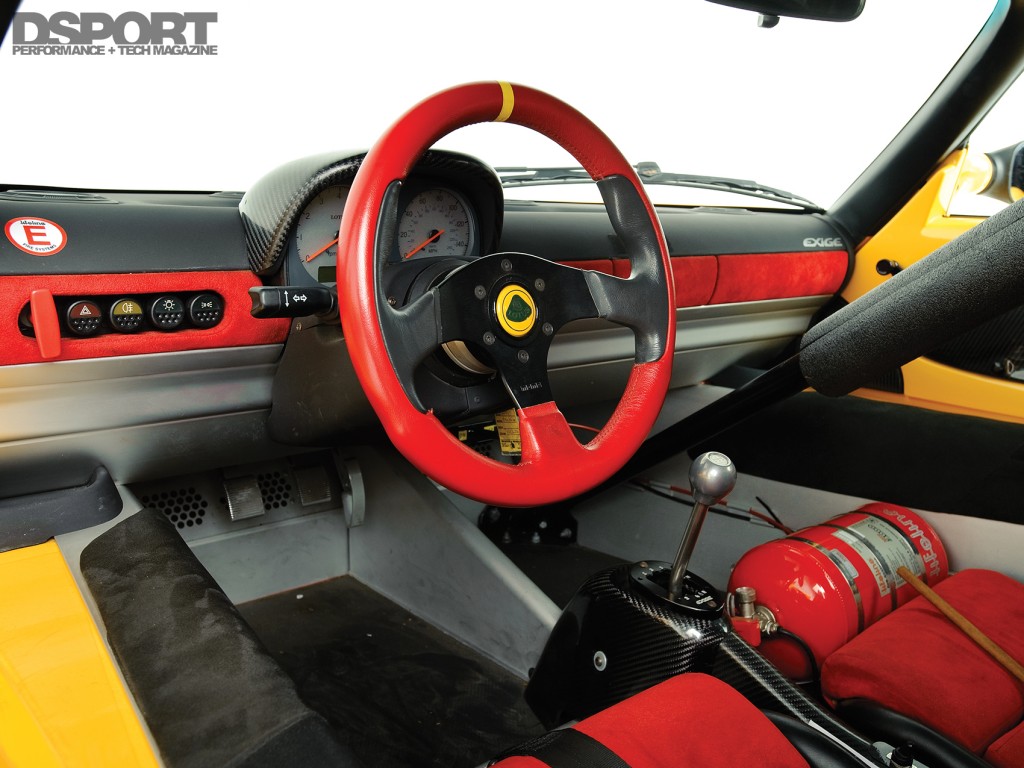
Rockets Away
So what do you get when you pair the lightest Lotus Exige with the largest- displacement Honda K-series engine and a highly-efficient centrifugal supercharger? Chris claims that this Exige’s 0-60 MPH acceleration time is just a fraction over 3-seconds. While the project has had its ups and downs, the results are proving to be well worth the wait and the expense. In the coming months, the Exige will be put through the rigors of some track days to see what systems need additional attention. If the vehicle can be set up to utilize all of its current power, Chris hasn’t rules out taking the power-to-weight ratio to the next level. A full carbon-fiber body and 500-horsepower engine may come in the future. For the time being, Chris looks forward to some seat time in his human-guided missile.
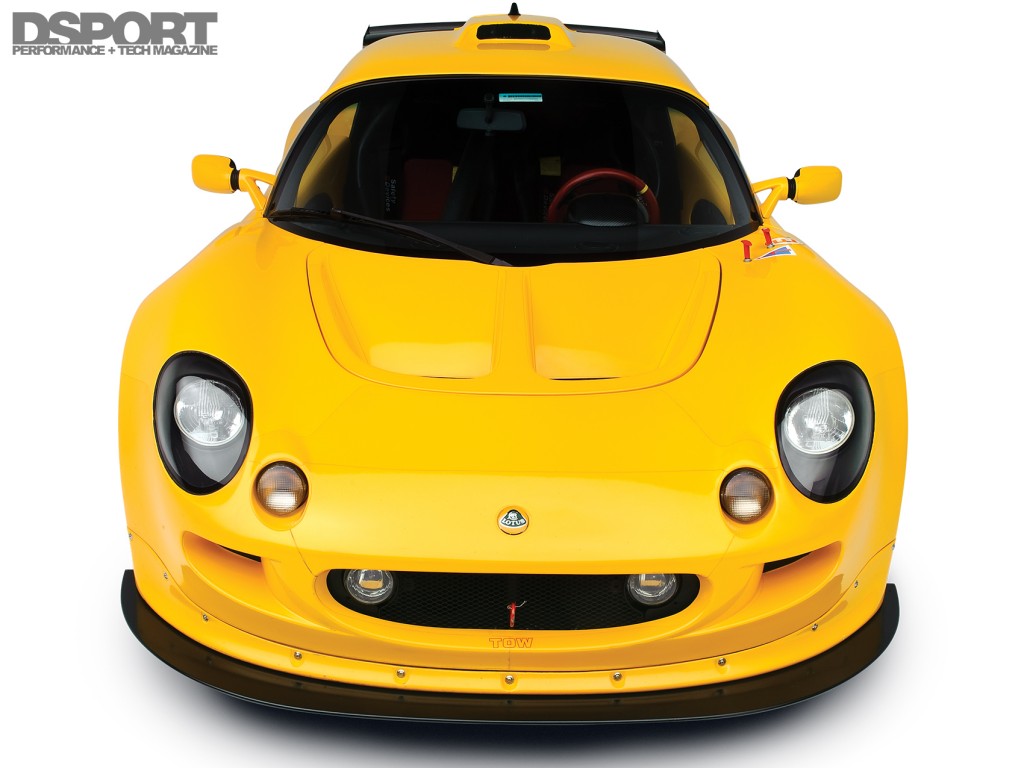
SPEC SHEET
| VEHICLE | |
|---|---|
| Year / Make / Model: | 2000 Lotus Exige S1 |
| Chassis Code: | S1 |
| Vehicle Weight: | 1,730 lbs. |
| Weight Bias (F/R): | 40.6% / 59.4% |
| Shift RPM: | 7,800 RPM |
| Redline RPM: | 8,000 RPM |
| Peak Boost: | 14 psi |
| Fuel: | 91-Octane Premium Pump Gas |
| ENGINE | |
|---|---|
| Engine Code: | Honda K24A8 Block w/ K20A2 Head |
| Displacement (cc): | 2,354 cc |
| Bore & Stroke (mm): | 87mm x 99mm |
| Peak Horsepower (@ RPM): | 412 whp @ 7,900 RPM |
| Peak Torque (@ RPM): | 290 lb-ft @ 5,800 RPM |
| Dyno Type: | Dynojet 248C |
| Engine Builder: | RS Machine |
| Machine Work: | Unsleeved block honed at stock bore |
| Pistons/Compression Ratio: | CP Pistons 10.0:1 Flat-top |
| Connecting Rods / Crank: | Carrillo Forged Connecting Rods |
| Camshafts: | BC Brian Crower (BC) Stage-2 Camshafts |
| Valves/Springs/Retainers: | BC Valve Springs and Retainers |
| Head/Main Studs: | ARP Head Studs |
| Air Induction System: | K&N Engineering Filter |
| Fuel Injectors: | RC Engineering 750 cc/min Injectors |
| Fuel Delivery System: | Factory Lotus In-tank w/ Bosch High- |
| output in-line Fuel Pump | |
| Engine Management System: | Hondata K-Pro |
| Engine Management Tuner: | Doug MacMillan of Hondata |
| Spark Plugs: | NGK |
| Exhaust Manifold: | Chris Parker Racing (CPR) Fabrication |
| Exhaust System / Downpipe: | Burns Stainless |
| Blow-Off Valve: | Bosch |
| Intercooler: | PWR Air-to-Water Intercooler System |
| Oil System: | Mugen Baffled Oil Sump |
| Canton Racing ACCUSUMP | |
| Performance Electronics: | Apex Speed Technology Wiring |
| Harness | |
| Voltphreaks 4-lb Lithium-ion Battery |
| SUPERCHARGER | |
|---|---|
| Supercharger: | Rotrex C30-94 Centrifugal Supercharger |
| Gear Ratio: | 1:9.49 |
| Max Mass Flow Rate: | 0.37~0.44 kg/s |
| Max Recommended Impeller Speed: | 100,000 RPM |
| Peak Adiabatic Efficiency: | 80% |
| Rated Power Capabilites: | 400+ horsepower |
| CHASSIS/DRIVELINE | |
|---|---|
| Springs, F&R (Make & Rate): | Eibach Springs |
| Shocks, F&R (Make & Rate): | Nitron Dampers |
| Transmission: | 2002-04 RSX Type-S 6-speed |
| Clutch / Flywheel: | ACT Stage-2 Clutch |
| Differential(s) (Make & Type): | Mugen Limited-slip Differential |
| Axles / Driveshaft: | Drive Shaft Shop Custom Axles |
| Wheels (Make, Size & Offset): | Speedline Corse Magnesium Wheels |
| 15×6-inch +14mm (F) | |
| 16×8-inch +11mm (R) | |
| Tires (Make & Size): | Hoosier R6 Tires |
| Brake Calipers (F&R): | AP Racing 4-piston (F) 2-piston (R) |
| Brake Rotors (Diameter, F&R): | AP Racing 2-piece Rotors |
| Brake Pads (Front & Rear): | Pagid Brake Pads |
| Brake Lines: | Elise Parts Stainless-steel Lines |
| Etc.: | Custom Mounts by MD Automotive |
| INTERIOR / EXTERIOR | |
|---|---|
| Roll Bar / Cage: | Lotus Sports Roll Bar |
| Fire Supression: | Lifeline Fire Suppression System |
| Spoiler / Wing: | Elise Parts Carbon-fiber Wing |
| Etc: | Elise Parts Carbon-fiber Side Sills |
| Elise Parts Carbon-Fiber Roof Scoop |



